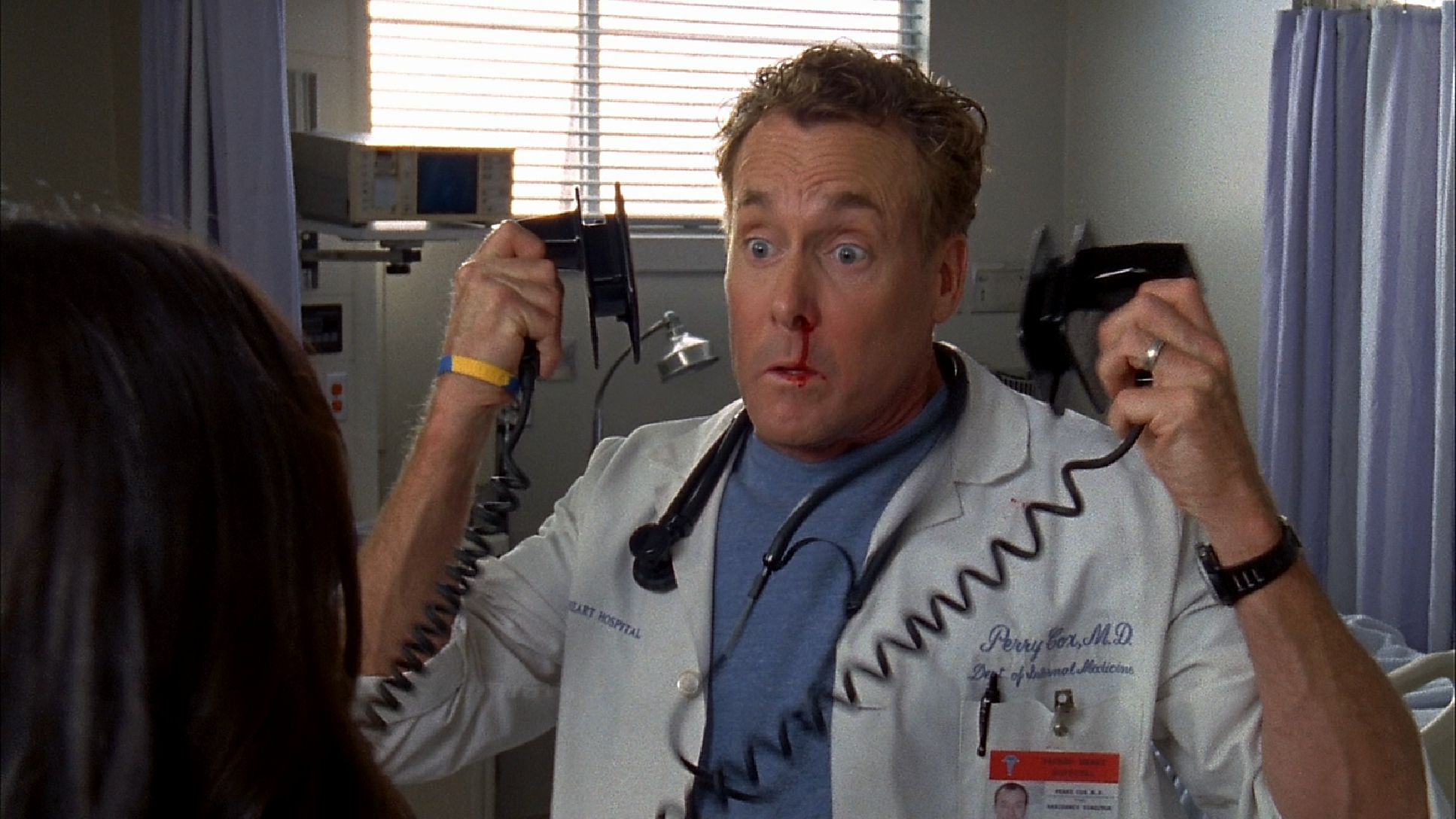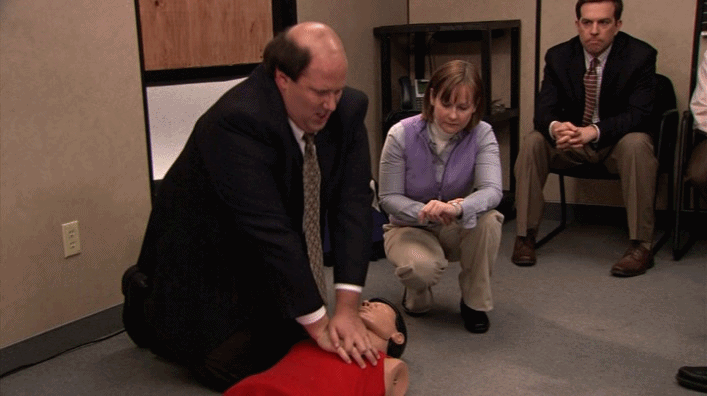When Hollywood meddles with medicine & first aid : the real truth

Source photo : Scrubs
We have all seen doctors give defibrillation paddle a "good luck rub" in movies or series to add a bit of drama to the scene.
Although this has become almost usual for Hollywood, this gesture does not exist in reality.
Performing this movement may damage the pallets and is simply useless for a proper operation.

Source : GIPHY / The Office
Nowadays almost all the American emergency scenes start by calling 9-1-1 (dial 1-1-2 from any European country) before helping a victim.
If you are not trained, do not worry - the operator will guide you through the process.
Although artificial respiration is necessary in some cases, such as a drug overdose or a drowning victim, studies show that chest compressions (hands only CPR) is all you need to help a victim of sudden cardiac arrest.
Source : GIPHY / Les Stagiaires
False!
In addition to revising your classics such as the Bee Gees' Stayin 'Alive' or the famous 'Macarena', training is the best way to learn how to save a life in case of an emergency.
For example, the Red Cross offers short courses - first aid initiation, introduction to exceptional situations and awareness of psychological support - to become a volunteer and help a victim.
Source : GIPHY
AEDs (Automated External Defibrillators) are designed to produce electrical shock to disrupt certain disordered cardiac arrhythmias such as tachycardia and ventricular fibrillation.
You can't jump start a heart like you would for a car.
The extended flat line (asystole) means that there is no electrical signal at all.
The defibrillator analyzes the heart rate and determines whether a shock is necessary or not. Therefore, if there is no activity, the shock will not be recommended!

